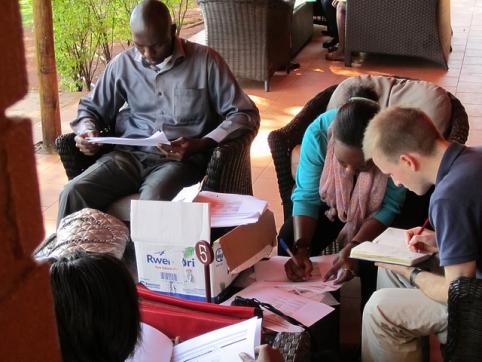Understanding the so-called “total resource envelope” is critically important for evidence-based policymaking and rigorous development research. But what happens when a group of donors does not follow international reporting norms? How can policymakers, practitioners, and citizens gain increased visibility on the role of emerging donors and related development finance activities in a given country or region when information is obscured?
Absent transparent accounting by emerging donors, alternative methods are needed to capture the scale, composition, and destination of their overseas development activities. Iterating better approaches will take equal parts innovation, experimentation, and collaboration across disciplines. In short, we need a global community of practice to track under-reported financial flows.
Today, AidData is releasing an updated version of our Tracking Chinese Development Finance in Africa dataset and methodology. Publicly available for download via china.aiddata.org, the new dataset captures over 1,900 non-investment development finance projects worth over $83.3 billion from 2000 to 2012. The database includes 268 pledged projects; however, the reported total of $83.3 billion only captures official commitments, including projects in implementation and completed projects. To create this comprehensive database, AidData collects and synthesizes project-level data from media reports, government documents and databases, Chinese embassy websites, NGO reports and scholarly articles. We refer to this open source approach to data creation and triangulation as the Tracking Under-Reported Financial Flows (TUFF) methodology.
Since its debut in April 2013, this project has provoked both positive and skeptical responses. These questions and critiques have pushed AidData to continue to refine our data collection methodology through dialogue with academics with China experts, government officials, and NGOs. Seeking to determine the accuracy of project records contained within the China in Africa database, we conducted a ground-truthing pilot in the summer of 2013. With the support of the United Nations University World Institute for Development Economics Research, a team of researchers and trained enumerators “ground-truthed” project locations identified using the TUFF methodology by conducting project site visits in two African countries. (For more information on the ground-truthing project and preliminary findings, read our recent First Tranche post and the working paper).

AidData Research Associate Austin Strange conducts ground-truthing studies in Uganda.
Updates to our data collection methods have uncovered additional projects and supporting documents. This allows us to describe with greater confidence what is happening where with respect to Chinese development finance in Africa. According to Mike Tierney, Director of the College of William & Mary’s Institute for the Theory and Practice of International Relations, “through our ground-truthing pilot…we gained new insights into the [original] dataset. Our [subsequent] refinements have improved the methodology at the margin, increasing our confidence in the quality of the data.”
More importantly, we hope that this database will serve as a jumping off point for others to use and suggest improvements in how we track and analyze financial flows from emerging donors. “One point that is true of this data, but also our other collection efforts is that there are researchers out there who will use our data – whether it’s geospatial, sector, or disbursement information – to innovate in ways we have never imagined," Tierney said. "The biggest breakthroughs are still in the pipeline.”
Even now, researchers are geocoding all projects in the China in Africa database for public release later this year. By assigning a precise, subnational geographic location to each Chinese development finance project, end users will be able view development activities with greater granularity for use in evidence-based policymaking, advocacy, and research.
A collaborative, multi-disciplinary approach is vital to piece together the puzzle of Chinese development finance. Because the methodology is replicable, it could be applied to other financial flows that are notoriously difficult to track. If we remain in silos – area studies experts, data scientists, political scientists, and others working independently on similar problems – we stand to lose valuable insights and methods. For this reason, AidData has added a new multimedia uploader to china.aiddata.org to elicit crowd-sourced content and welcomes a wide range of stakeholders to give feedback on the underlying data and methodology.
Despite these small steps forward, more collaboration is needed among those seeking to understand the role of emerging donors in development. As AidData’s Chief Social Scientist Dan Nielson argues, “[our] TUFF methodology identifies projects that couldn’t be found through qualitative field research, and area studies experts’ field research captures projects that may not be discovered using TUFF. By combining methodologies, [we get] closer to understanding the total resource landscape in Africa…and tap into collective knowledge on the ground to further inform our work.”


